A couple of weeks ago, I carefully carried out a jar that had been standing on the cool surface of a granite shelf for well over a year, into my kitchen. Suspended in brine were neat layers of rounded, green, wild mangoes that I had been saving for a while.
The ferocious summer heat has made this a year of shortages. Of rain, and water to begin with. Then koilemeen, the delicious little fish from the freshwater streams and flooded paddy fields of Coorg failed to turn up this past season. Kaipuli, bitter oranges, with their incomparable flavour, were in short supply; and farmers and planters who normally gather the tiny, wild, pepper-scented mangoes of Coorg reported a dismally poor, almost non-existent crop.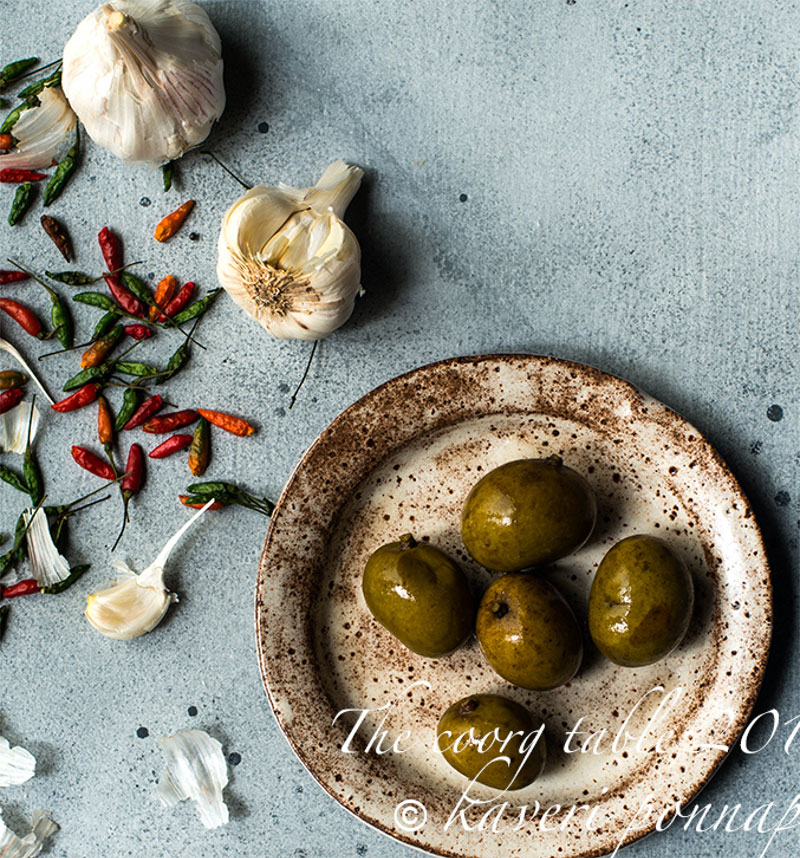
When fresh, wild mangoes come into the kitchen, it is usually by the bag or basketful, and I handle them differently –not entirely carelessly, but maybe just a bit casually; just a bit complacently, my eye running over the numbers with satisfaction. Wild mangoes preserved in brine have always been there, even when trees yielded enormous numbers like clockwork, year after year. They were set aside for weddings and special celebrations that took place off season, when fresh wild mangoes could no longer be had. Everyone had a cache small, or large, set aside for just such an event. They were shared around too: in an emergency, you could count on your neighbours and friends to part with some of their preserved fruit if an unexpected family event presented itself. Very experienced home cooks tell me that preserved mangoes hold their flavour for years together. 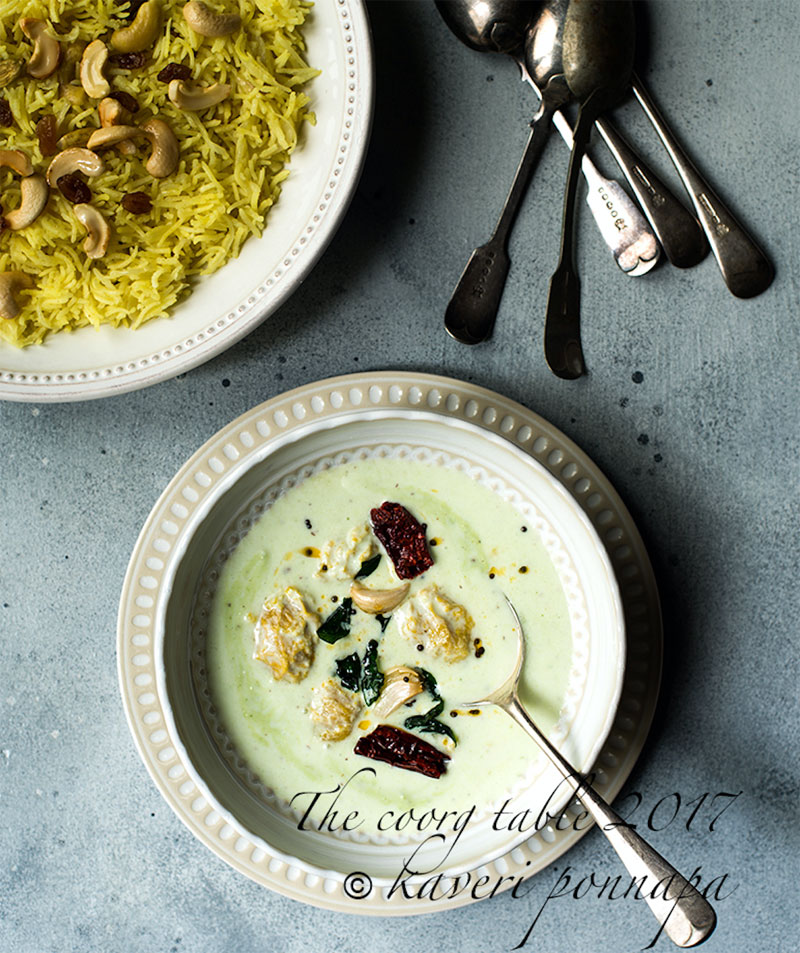
This year, I scooped a few mangoes out of the jar carefully, counting them slowly into a bowl. I peeled back the skin of one, softened after its long soak in brine, and squeezed out every last drop of juice I could. Such a long way off from the soil in which it had grown, and the tree on which it had ripened, the familiar scent was still so intense that before I could help myself, I had popped one miniature fruit into my mouth. Salty. Sweet. Faintly peppery.
The days were still too hot and humid to think of a spicy curry, so I chose to make maange mor pajji instead. The peeled, preserved mangoes, carrying an imprint of my fingers on their softened flesh are drenched in a dressing of curd that carries a bite of raw mustard, earthy garlic; bird’s eye chillies; the green freshness of coriander, coconut, and a dash of sugar to hold everything in balance. Some of the brine, which has soaked in hints of the scent and flavour of the mangoes over their long immersion together, will run into the dressing. It’s a taste so elemental, you are unlikely to forget it.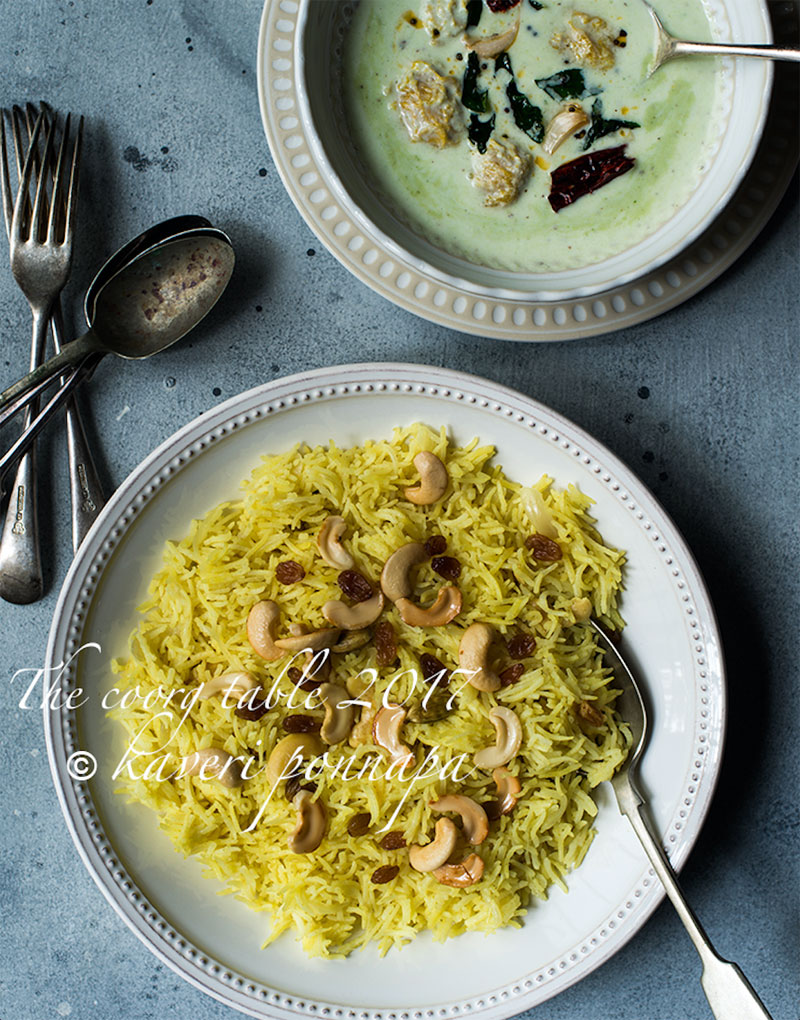
Instead of the usual erachi pulao (mutton pulao), I cooked a light, fragrant ghee rice and we ate the maange mor pajji with it. For that moment, the table felt very well provided. Sucking on each minute mango seed for the last drop of juice and that special flavour, I wondered what next year’s seasons would bring.
Photo Credits:
All Food Styling: Kaveri Ponnapa
Please look out for the recipe in my upcoming cookbook
Thank you for visiting this page. If you read something that you enjoy, or see an image that you like, please take a moment to write a response. Do look out for the recipes of all the food featured here in my upcoming cookbook.

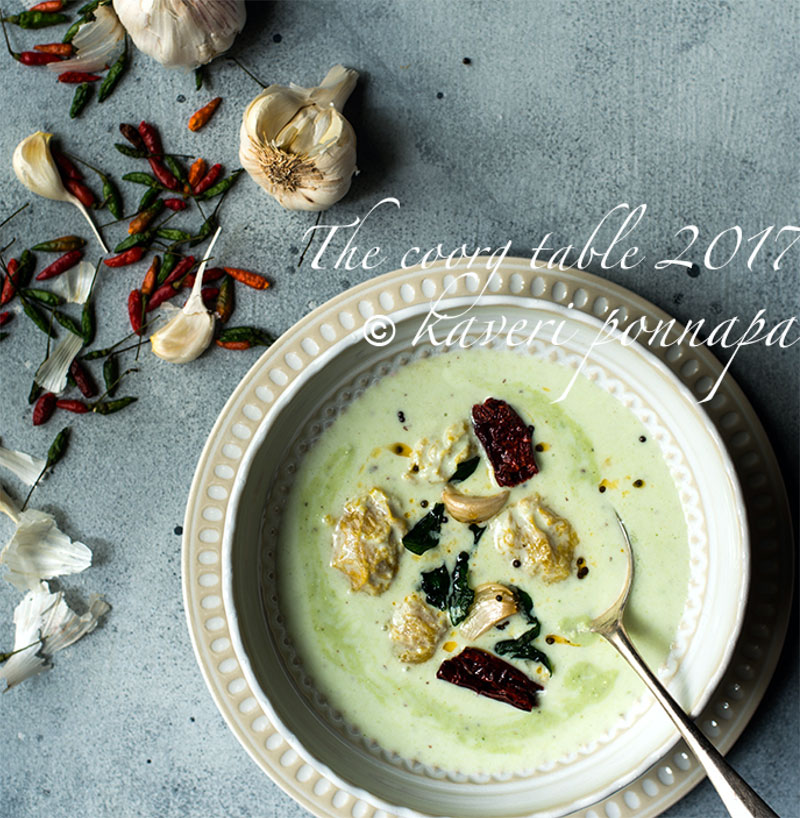
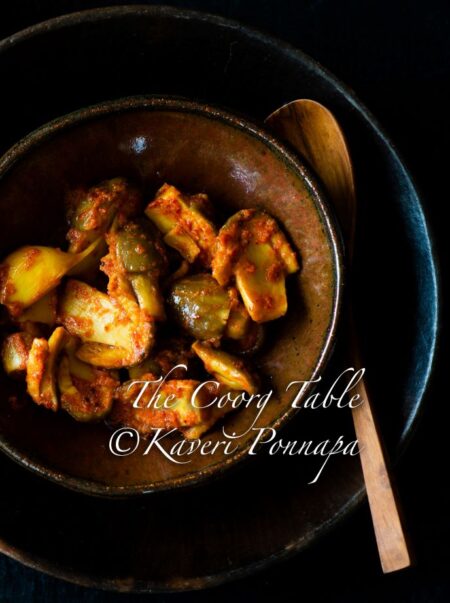


Hello,
Mangoes are always mouth watering..I love mangoes…Wild mango curry, pajji, pickle wow! No curry can match coorg’s mango chutney and curry for me…always nice to read your blogs. Sometime I read 3 to 4 times since it take me to my sweet old memories…thanks for posting such a lovely receipes..keep on posting…Thank you!!
Hello Kaverappa, thank you for reading, and even more for reading the posts over again. I am so happy they bring back memories. I know that a whole lot of pictures, tastes and textures from the past and present swirl around in my head every time I cook Coorg food and write the posts. I love it when that happens! Warm wishes. Kaveri
Hello,
Your post today ushered such sweet memories of this sour fruit… I am an ardent and until now a silent fan of your writing, your food, your elegant styling… honestly, about everything on this space 🙂 I remember my grandmothers maintaining a barni full of mangoes in brine. In the times when we just had access to seasonal produce these came handy and were always used to make some quick pickles or chutney in case we had unannounced guests or the pickles had disappeared sooner than expected.
I can’t wait to lay my hands on your upcoming book. Hope it is happening soon 🙂
Have a good day..
Thank you so much for creating The Coorg Table 🙂
With love and regards,
Sheetal
Hello Sheetal, how wonderful to read this from you, first thing in the morning! I can just picture the scene you have described, from the time when all our lives were lived at a different pace. And yes, those jars of preserved fruit and vegetables were so useful when visitors stayed on for a meal. Thank you for your very generous appreciation of The Coorg Table,it means a great deal -please do keep reading, and write when you connect with any post or dish, I would love to hear from you. I wish you a barani of mangoes in brine in your kitchen right now! Warm wishes.Kaveri